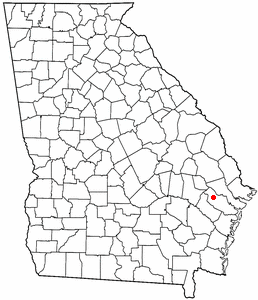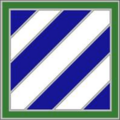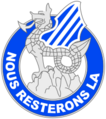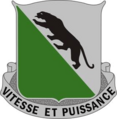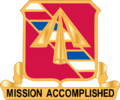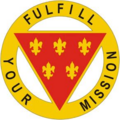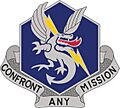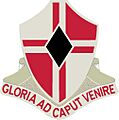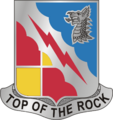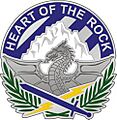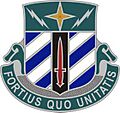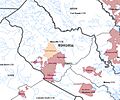Fort Stewart facts for kids
Quick facts for kids Fort Stewart |
|
|---|---|
| Georgia | |

Shoulder sleeve insignia of the 3rd Infantry Division
|
|
| Coordinates | 31°52′48″N 81°36′27″W / 31.88000°N 81.60750°W |
| Type | Army post |
| Site information | |
| Controlled by | United States Army |
| Site history | |
| Built | January 1941 |
| In use | 1941–1945 1950–present |
| Garrison information | |
| Garrison | 3rd Infantry Division |
Fort Stewart is a large United States Army base located in Georgia, USA. It covers a huge area, mostly in Liberty and Bryan counties. Some parts also reach into Evans, Long, and Tattnall counties.
The nearby city of Hinesville is closely connected to Fort Stewart. Many people who live at Fort Stewart are part of the 3rd Infantry Division, a well-known Army unit. The base is about 280,000 acres (1,100 square kilometers) in size. This includes land that used to be a town called Clyde, Georgia.
Contents
What is Fort Stewart?
Fort Stewart is a major training area for the U.S. Army. It's the largest Army base east of the Mississippi River. The base is about 39 miles (63 km) wide from east to west and 19 miles (31 km) long from north to south.
Because it's so big, Fort Stewart has plenty of space for different types of training. Soldiers can practice with tanks, artillery, helicopters, and small weapons. The weather is usually good, so training can happen almost all year round.
Geography of Fort Stewart
Fort Stewart is located along the Canoochee River. This river flows through the area, adding to the natural landscape of the base.
Army Units at Fort Stewart
Fort Stewart is home to the 3rd Infantry Division. This division is a very important part of the U.S. Army. It includes different types of units, such as:
- Armored Brigade Combat Teams, which use tanks and other armored vehicles.
- Field Artillery units, which use large guns.
- Engineer Battalions, which help build things and clear paths.
- Support Battalions, which provide supplies and maintenance.
These units train regularly at Fort Stewart to be ready for missions around the world.
History of Fort Stewart
Fort Stewart is named after Brigadier General Daniel Stewart. He was a hero during the American Revolutionary War and an important leader from Liberty County, Georgia.
Starting as an Anti-Aircraft Training Center
In June 1940, the U.S. government decided to buy land in coastal Georgia. The plan was to build a training center for anti-aircraft artillery. This means training soldiers to shoot down enemy planes. The chosen spot was near Hinesville, Georgia.
The first land was bought in July 1940. Over time, the base grew to cover more than 280,000 acres. This large area was needed for firing ranges where soldiers could practice shooting.
In November 1940, the training center was officially named Camp Stewart. It honored General Daniel Stewart. At first, soldiers trained with wooden models because real anti-aircraft guns were rare. Live firing drills were done on beaches in Florida until the ranges at Camp Stewart were ready.
By late 1941, Camp Stewart was fully active. It trained many soldiers who went on to fight in World War II in Europe, North Africa, and the Pacific.
Prisoner of War Camp
During World War II, Camp Stewart also became a place to hold prisoners of war (POWs). These were German and Italian soldiers captured by Allied forces. They were kept in special facilities on the base. These prisoners helped with work around the base, including construction and farming.
By 1944, Camp Stewart was very busy, with over 55,000 soldiers preparing for the D-Day invasion. After the invasion, the need for anti-aircraft training decreased. By January 1945, only the POW camp was still operating.
After World War II
After World War II ended, Camp Stewart was mostly quiet. It was used briefly to help soldiers return home. On September 30, 1945, the base was closed down. Only a small group of people stayed to maintain the facilities. The Georgia National Guard used it for summer training.
The Korean War and Becoming Fort Stewart
When the Korean War began in June 1950, Camp Stewart reopened. Its facilities were repaired, and National Guard troops came for training. On December 28, 1950, it was renamed the 3rd Army Anti-Aircraft Artillery Training Center. Soldiers trained intensely for service in Korea.
Later, the base's role changed to include training with tanks and armor. This was because air control in Korea was not a major challenge. On March 21, 1956, Camp Stewart was officially renamed Fort Stewart. This showed it was no longer a temporary base but a permanent military installation.
In 1959, Fort Stewart became an Armor and Artillery Firing Center. Its old anti-aircraft ranges were perfect for this new type of training.
Cuban Missile Crisis
In October 1962, the Cuban Missile Crisis happened. This was a very tense time when the U.S. and the Soviet Union had a serious disagreement over missiles in Cuba. The 1st Armored Division was sent to Fort Stewart to get ready. In just two weeks, the base's population grew from 3,500 to over 30,000 people.
The country prepared for a possible conflict, but a peaceful solution was found. Shortly after, President John F. Kennedy visited Fort Stewart on November 26, 1962. He reviewed the 1st Armored Division and was briefed on the military's readiness.
Vietnam War Era
After the Cuban Missile Crisis, Fort Stewart continued its training role. In the late 1960s, the Vietnam War led to another change. The war in Vietnam required many helicopters and pilots.
To meet this need, a part of the U.S. Army Aviation School moved to Fort Stewart in 1966. Fort Stewart's new mission was to train helicopter pilots and teach them how to use helicopter weapons. Instead of training soldiers to shoot down aircraft, the base was now training soldiers to fly them.
Hunter Army Airfield
When the U.S. Air Force closed its base at Hunter Field in Savannah in 1967, the Army took it over. Together with Fort Stewart, it became the U.S. Army Flight Training Center. Many pilots trained here and were sent to Vietnam.
Hunter Army Airfield is also home to the U.S. Coast Guard Station, Savannah. This is the largest helicopter unit in the Coast Guard. It provides search-and-rescue services along the coast.
By mid-1972, helicopter training at Fort Stewart ended. Both Hunter Field and Fort Stewart became regular bases. Hunter Field closed completely the next year, and Fort Stewart was mostly quiet, except for National Guard training.
After Vietnam

On July 1, 1974, the 1st Battalion, 75th Infantry Regiment (Ranger), a special Army unit, came to Fort Stewart. This was the first Army Ranger battalion activated since World War II. Hunter Army Airfield reopened to support their training.
In October 1974, the Headquarters of the 24th Infantry Division was activated at Fort Stewart. This famous unit had fought in World War II and the Korean War. The 24th Infantry Division made Fort Stewart its home.
The 24th Infantry Division trained hard at Fort Stewart. They also went to other places like the National Training Center in California, Egypt, and Turkey for exercises. Their mission was to be ready to deploy anywhere in the world quickly.
In August 1990, Iraq invaded Kuwait. Fort Stewart played a key role in sending the 24th Infantry Division's equipment and personnel to Saudi Arabia. Within a month, the entire division was in Saudi Arabia. Many National Guard and Reserve units came to Fort Stewart to help support the operations.
After the conflict, the 24th Infantry Division returned home. On April 25, 1996, the 24th Infantry Division was replaced by the 3rd Infantry Division at Fort Stewart. This started a new chapter for the base.
Fort Stewart also became an important place for Army units preparing for missions like Operation Iraqi Freedom. It also hosts annual training for the National Guard.
People at Fort Stewart
A small part of Fort Stewart is a special area for statistics called a "census-designated place" (CDP). In 2020, 8,821 people lived in this area.
The population of Fort Stewart has changed over the years:
- 1970: 4,467 people
- 1980: 15,031 people
- 1990: 13,774 people
- 2000: 11,205 people
- 2010: 4,924 people
- 2020: 8,821 people
These numbers often change based on how many military families are stationed at the base.
Who Lives Here?
According to the 2020 census, the people living in the Fort Stewart CDP were:
- White: 45.48%
- Black or African American: 24.34%
- Hispanic or Latino (of any race): 19.63%
- Asian: 2.54%
- Mixed Race: 6.09%
- Other groups make up smaller percentages.
In 2000, the average household had about 3.65 people. Many households (81.7%) had children under 18 living with them. The median age of people at Fort Stewart was 22 years old. This is typical for a military base, as many young soldiers and their families live there.
Schools at Fort Stewart
The schools on Fort Stewart are run by the Department of Defense Education Activity (DoDEA). They operate several elementary schools on the base:
- Diamond Elementary School (PreKindergarten to Grade 5)
- Kessler Elementary School (PreKindergarten to Grade 6)
- Murray Elementary School (PreKindergarten to Grade 5)
Students in middle and high school attend public schools in the surrounding counties. For those in Liberty County, the Liberty County School District runs the schools.
Climate at Fort Stewart
Fort Stewart has a humid subtropical climate. This means it has hot, humid summers and mild winters. The weather is usually good for outdoor activities and training.
The hottest temperature ever recorded at Fort Stewart was 110°F (43°C) on July 15, 1986. The coldest temperature recorded was 0°F (-18°C) on January 21, 1985.
The area gets a good amount of rain throughout the year, especially in the summer months.
Images for kids
See also
 In Spanish: Fort Stewart para niños
In Spanish: Fort Stewart para niños


